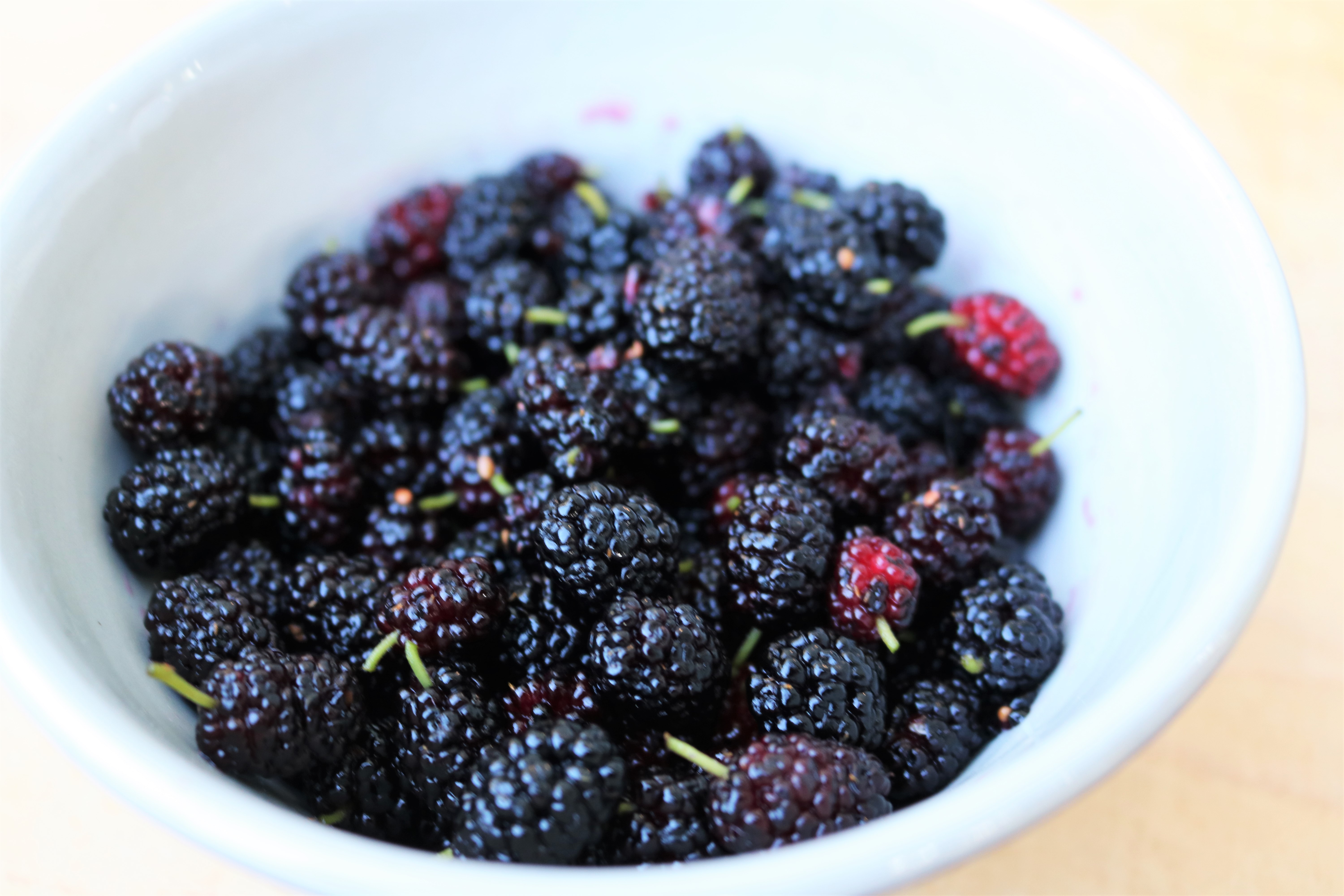
An Unsuspecting Gift
When we moved into our house, a weird, little tree was growing in the corner of our garden. I didn’t think much about it for a couple of years. One June I noticed berries forming on the branches. They looked like little blackberries. After doing some research, I discovered that this was a White Mulberry tree and that the mulberries were edible. We picked the dark juicy berries and popped them in our mouths. They are not quite as sweet as a blackberry, but they have a very nice taste that the whole family has grown to love.

People tend think mulberries and blackberries are almost the same fruit. While they do look a bit alike, they are actually very different. In fact, mulberries are not even a berry. They are a fruit that grows on a deciduous tree, whereas blackberries are a true berry belonging to the rose botanical family.
Summer Pickings
Ever since the mulberries first appeared on our tree, from mid-June to mid-July, I stop and nibble on these little darlings every time I pass under the branches. In fact, you can count on me taking three to four minutes extra every time I walk under it. One of the most enjoyable things about this tree is to listen and watch the robins go to town in the branches. They sing and fight with each other, but mostly they are busy stuffing their little beaks full of the nutritious, little berries.
People often call the mulberry tree a weed because said birds deposit the seeds elsewhere. For my part, I am glad they do. That, no doubt, is how we got ours. Next time, however, I will tell the birds to plant it on the back corner of our yard instead of the front corner, as I do spend a bit of time sweeping the berries off our sidewalk!

White Mulberry trees are quite a common tree in our region, probably for the above reason. They have an interesting trait in that they have leaves of three distinctly different shapes. One is unlobed, one is shaped a bit like a mitten, and one can look a little like a two-thumbed mitten. The tree originated in China where its leaves are used as the main food for the silkworm. The leaves are edible for humans if cooked first. They can be used in wrapping foods as you would with a grape leaf.
Cooking with Mulberries
This year I’m drying the berries to add to muffins and granola. They are also great served fresh in both savory and sweet dishes. After slightly crushing them, they are delicious sprinkled with superfine sugar and served over a lemon curd tart. They add depth to icy drinks by muddling them with fresh mint leaves. They make for a sweet/savory fresh salsa with lime and cilantro. I enjoy using them as an interesting counter to the savory taste of a bok choi salad. For breakfast, they are a great addition to crepes with brie cheese and cinnamon. Creating with these tasty little berries has kept my creativity working overtime.

I love the idea of eating such an interesting berry from a tree that was planted by those chatty, fat robins, that many consider a nuisance. While mulberries don’t come close to matching the sweetness of raspberries or strawberries, I am thoroughly enjoying having this tree around. It is a part of my edible landscape. It truly is a multi-purpose tree: it feeds us, feeds the robin population, keeps us entertained, looks good with strands of twinkle lights wrapped around its branches, and provides nice shade and vertical dimension to that corner of the yard. We don’t dance around it singing nursery rhymes– wait! Maybe we should do that as well…













What a wonderful article–Bravo!!
I was blessed to enjoy these delicious berries with my even more wonderful family this summer!
[…] tree which the birds planted years ago, I noticed that the clematis had vined up around a lower mulberry branch. The plum-colored flowers intertwined with the dark purple berries. This simple artistry […]